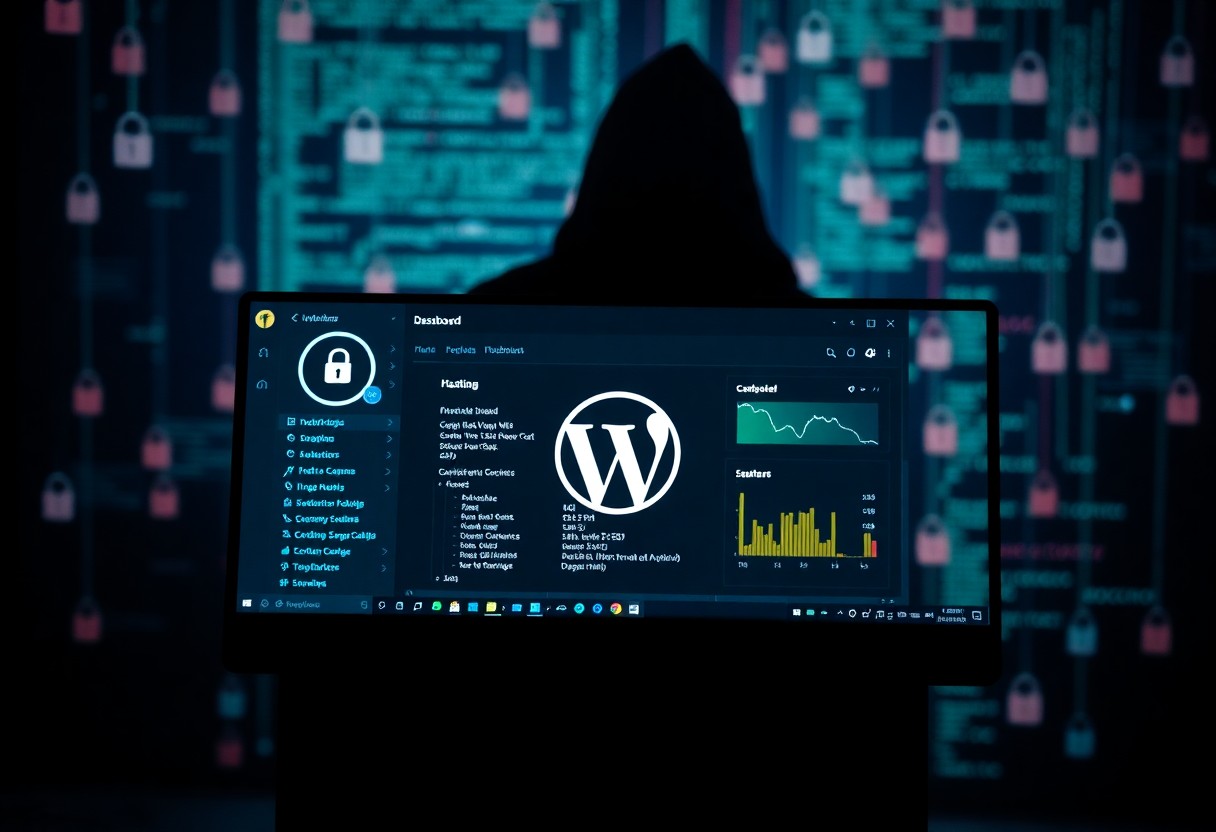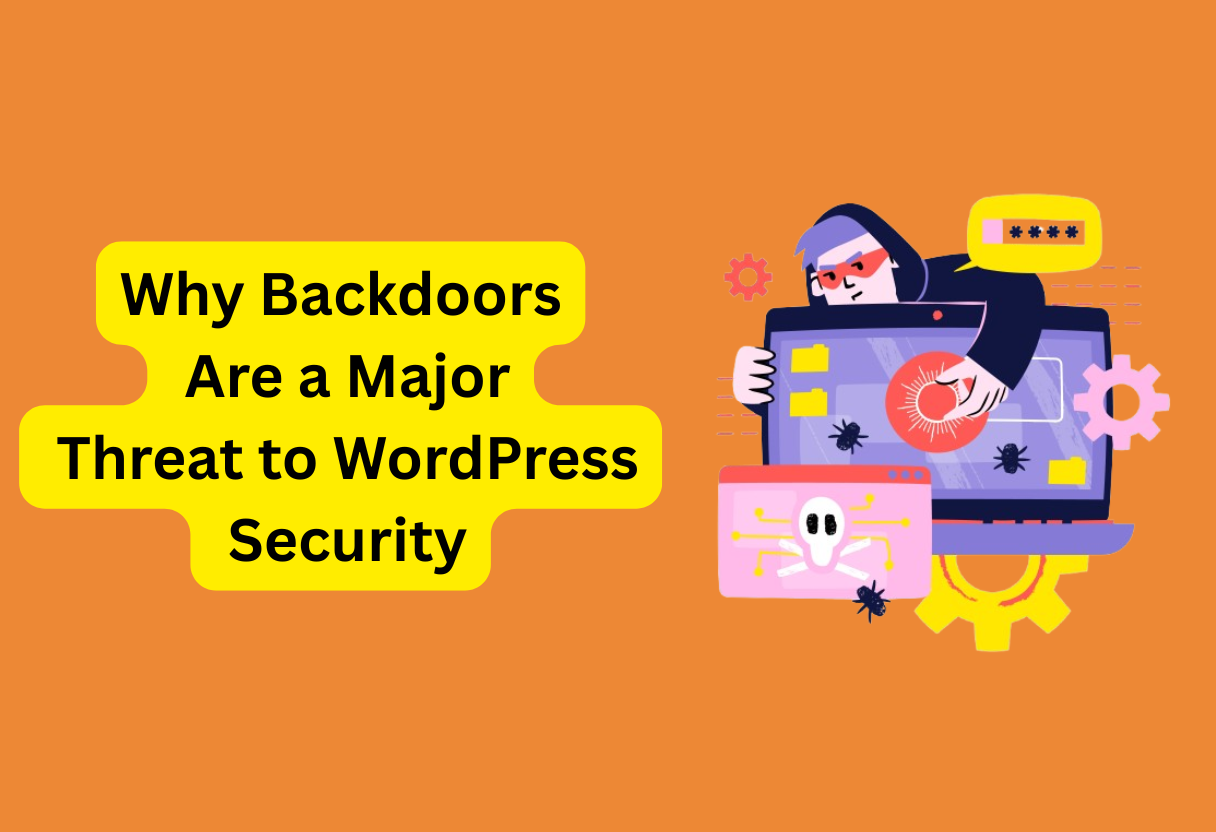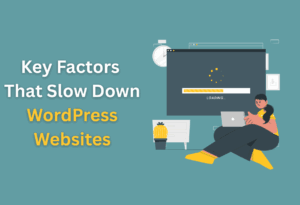It’s vital for you to understand that backdoors pose a significant risk to your WordPress site’s security. These hidden vulnerabilities allow malicious actors to bypass your usual protection measures, leading to potential data breaches and website attacks.
If a backdoor is embedded within your site’s code, it can go unnoticed while allowing unauthorized access to your sensitive information. By recognizing the dangers of backdoors, you can better safeguard your WordPress site and maintain your peace of mind, knowing that your online presence is secure.
Key Takeaways:
- Backdoors provide unauthorized access to a website, allowing hackers to manipulate content, steal data, or launch further attacks without detection.
- They often result from vulnerabilities in outdated plugins, themes, or unmonitored code changes, emphasizing the importance of regular updates and security audits.
- Backdoors can persist even after malware is removed, making it imperative for WordPress users to implement comprehensive security measures to prevent reinfection.
Understanding Backdoors
Before you can appreciate the danger they pose, it’s vital to have a clear understanding of backdoors in the context of WordPress security. Backdoors are hidden methods that allow unauthorized users to gain access to your website and its sensitive information without needing conventional credentials. This illicit access can lead to devastating consequences for your site and your users.
Definition of Backdoors
By definition, a backdoor is a vulnerability intentionally left open in software, allowing unseen access to an otherwise secure system. In many cases, hackers exploit these vulnerabilities to bypass security measures and gain control over your WordPress site.
Common Methods of Insertion
At the core of the backdoor issue is how these malicious scripts often infiltrate your website. Attackers usually employ techniques such as malicious plugins, compromised themes, or even web server vulnerabilities to insert backdoors, granting them illegal access.
Understanding how backdoors are inserted into your WordPress site is vital for protecting your online presence. Often, they infiltrate through malicious plugins that seem harmless but are engineered to grant hackers control of your site. Compromised themes can also serve as entry points, often leading to infected files that contain hidden scripts. Additionally, exploiting web server vulnerabilities can allow attackers to manipulate legitimate code, inserting backdoors without detection. By keeping your site updated and vigilant, you can significantly reduce the risk of these dangerous infiltrations.
The Impact of Backdoors on WordPress Security
Any backdoor present in your WordPress site can lead to serious vulnerabilities, allowing malicious actors to bypass standard security measures. This undermines the integrity of your website and exposes sensitive data. When attackers exploit these hidden pathways, they can manipulate your site, deface it, or use it for malicious purposes, affecting your brand’s reputation and jeopardizing the trust of your users.
Vulnerabilities Exploited
WordPress is frequently targeted due to its popularity, making it an attractive playground for cybercriminals. They actively seek out vulnerabilities in themes, plugins, and core files. These exploits often enable backdoors to be implanted, granting hackers extensive control over your site without your knowledge. Staying updated and aware of these threats is necessary to safeguarding your online presence.
Consequences for Website Owners
Backdoors not only compromise your site’s security but can also have severe ramifications for you as the website owner. Your personal and customer data could be stolen or manipulated, resulting in financial losses and potential legal repercussions. Furthermore, your site’s online reputation can suffer, leading to a decline in traffic and trust from your users, which could tarnish your brand long-term.
But the implications of compromised security extend beyond immediate damages. Each backdoor found can lead to significant financial burdens from recovery costs, including hiring security experts and rebuilding your site. The long-lasting effects can include a loss of customer loyalty and brand credibility, as your audience may hesitate to engage with a site that has previously experienced security breaches. It’s crucial to prioritize security to prevent these negative outcomes, ensuring a safe environment for you and your visitors.
Identifying Backdoors in WordPress
All website owners must be vigilant in identifying backdoors in their WordPress installations. These hidden entry points can allow unauthorized access to your site, compromising your data and reputation. Regular monitoring and particular attention to unexpected files, unauthorized changes, and suspicious user behavior can help unveil these threats. Understanding how to recognize these signs is vital for maintaining the security of your WordPress site.
Signs of Compromise
On detecting unusual activity, such as fluctuating traffic patterns, unexplained admin accounts, or modified files, you should consider your WordPress site compromised. Unusual login times or locations can signal that a backdoor has been exploited. Keeping an eye out for these signs can make it easier to catch potential breaches early.
Tools for Detection
By utilizing specific tools and plugins designed for security scanning, you can effectively detect backdoors in your WordPress site. These tools often scan for known vulnerabilities and suspicious file changes, making it easier to maintain your security posture. Integrating them into your regular site maintenance routine can notably enhance your site’s protection.
A wide range of security plugins are available to assist you in scanning your WordPress site for backdoors. Tools like Wordfence and Sucuri not only scan for malicious code but also provide ongoing monitoring and firewall protection. Furthermore, employing a file integrity monitor helps you detect any unauthorized changes to your files in real time, allowing you to take prompt action. Regular use of these tools can significantly bolster your defenses against backdoor intrusions.

Prevention Strategies
Once again, protecting your WordPress site from backdoors requires a proactive approach. Implementing robust prevention strategies, including strong passwords, two-factor authentication, and regular monitoring, can significantly reduce your vulnerability to these hidden threats. Always be vigilant and stay informed about new security measures and updates to keep your website secure.
Best Practices for Security
One of the best practices for security is to prioritize the use of strong, unique passwords for all user accounts. Additionally, you should enable two-factor authentication to provide an extra layer of protection against unauthorized access. Regularly audit and review user permissions, ensuring that only trusted individuals have access to your site.
Implementing strong password best practices is essential for safeguarding sensitive information and preventing data breaches. Educating users about the importance of password complexity, such as incorporating symbols, numbers, and a mix of uppercase and lowercase letters, can significantly bolster security. Finally, consider implementing a password manager to generate and store these robust passwords securely, reducing the likelihood of password reuse across different platforms.
Regular Maintenance and Updates
To maintain your WordPress site’s security, performing regular maintenance and updates is vital. This includes keeping WordPress core, themes, and plugins updated to their latest versions, as updates often include vital security patches that address vulnerabilities. You should also regularly back up your website, ensuring you can quickly recover your site in case of a breach.
Practices such as updating your WordPress core, themes, and plugins can significantly enhance your website’s security posture. Outdated software is a common entry point for cybercriminals, so consistently applying security patches is vital to mitigate risks. Additionally, setting up automated backups ensures that your data remains safe and recoverable in case of an attack. A robust maintenance schedule not only helps prevent backdoors but also enhances the overall performance and longevity of your WordPress site.
Responding to a Backdoor Infection
Your immediate response to a backdoor infection can significantly mitigate potential damage. Act quickly to identify the infection, isolate the affected files, and suspend access to your site to protect your visitors. Conduct a thorough scan using security plugins and tools to ascertain the extent of the compromise and determine if any sensitive data has been exposed or altered.
Immediate Actions to Take
Behind every backdoor infection lies the potential for extensive damage. Remove any suspicious plugins or themes, change all passwords associated with your WordPress site, and inform your web host about the infection. This swift action helps to prevent further unauthorized access while you assess the extent of the impact.
Recovery and Restoration
With the infection identified and contained, focus on recovering your site to its original state. This involves restoring clean backups, ensuring all themes and plugins are up to date, and implementing enhanced security measures to prevent future attacks. You may also consider engaging a security expert to conduct a thorough audit of your site.
Restoration involves not just the technical steps of replacing infected files but also assessing the overall security posture of your WordPress site. Ensure that your backups are secure and up to date, examine your hosting environment for vulnerabilities, and implement strong security practices such as two-factor authentication and regular security audits. A complete restoration means being proactive about security to avoid future incidents and protect your valuable content.
The Future of WordPress Security
After understanding the complexities of WordPress security, it’s clear that the future will demand more vigilance and innovation. As the digital landscape evolves, you must stay informed about potential threats and adapt your security practices accordingly. New strategies and technologies will emerge, necessitating your proactive engagement to protect your website effectively.
Emerging Threats
Along with advancements in technology, new security threats continue to surface, including sophisticated hacking techniques and zero-day vulnerabilities. As cybercriminals become more adept, you need to stay alert to the latest trends in attacks that could compromise your site and user data.
Enhancements in Security Measures
Emerging technologies and tools are gearing up to enhance your WordPress site’s security. You can look forward to innovative solutions leveraging artificial intelligence, machine learning, and more robust encryption methods, all contributing to a safer online environment for your content and users.
In fact, advancements such as AI-driven security plugins can offer real-time monitoring and threat detection, significantly reducing your website’s exposure to risks. These tools provide automated updates and active threat remediation, giving you peace of mind. Moreover, enhanced encryption protocols will help protect sensitive information, ensuring that both your data and your users’ data remain secure. Embracing these innovations will empower you to fortify your WordPress security for years to come.
Summing up
Hence, backdoors pose a significant threat to your WordPress security by allowing unauthorized access to your site without detection. These vulnerabilities can lead to data breaches, malware infections, and loss of control over your content.
You must remain vigilant and prioritize securing your website against such risks by regularly updating your plugins, themes, and core files, as well as using strong passwords and security measures. By staying proactive, you can help ensure that your WordPress site remains safe and protected from potential backdoor exploits.





